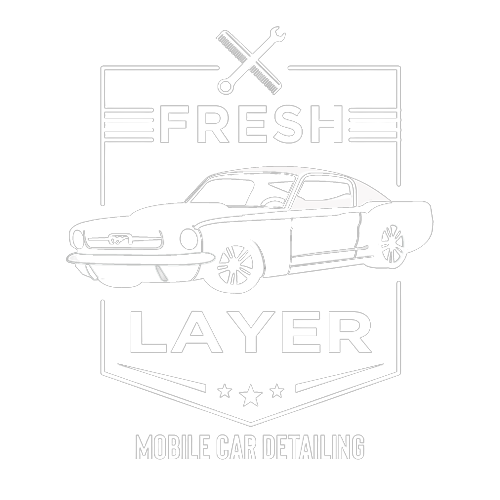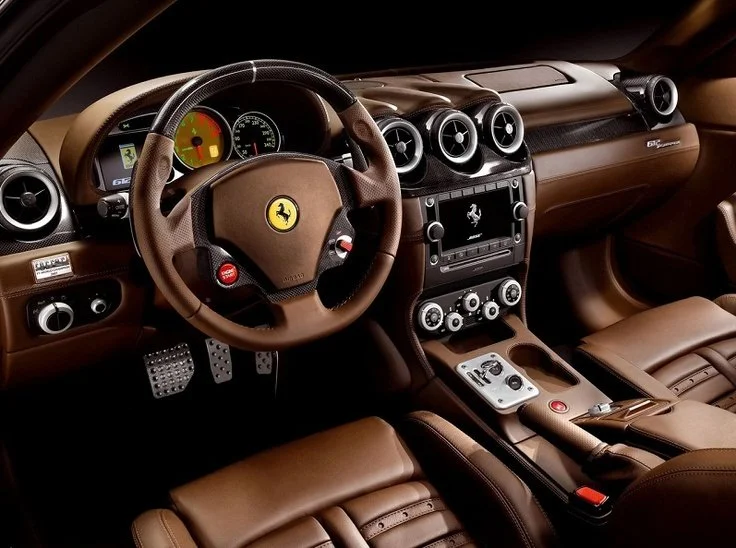Transform Your Car's Interior: The Ultimate San Diego Guide to Professional-Grade Deep Cleaning & Leather Conditioning
Discover why San Diego's most discerning car owners trust Fresh Layer Mobile Detailing for transforming their vehicle's interior into showroom perfection, with professional techniques that deliver unmatched results right at your doorstep.
The moment you slide into a car detailed by Fresh Layer Mobile Detailing is an experience unlike any other - that unmistakable feel of perfectly conditioned leather, the fresh scent of a thoroughly cleaned interior, and the satisfaction of knowing your vehicle has received San Diego's most meticulous mobile detailing service. Whether you're in La Jolla, Pacific Beach, or anywhere in San Diego County, our expertise comes directly to you.
| Environmental Factor | Impact on Interior | Fresh Layer Solution |
|---|---|---|
| Salt Air Exposure | Leather degradation, fabric oxidation | Specialized protective coating |
| UV Radiation | Color fading, material breakdown | UV-resistant treatment |
| Marine Layer Moisture | Mold growth, musty odors | Dehumidification process |
| Beach Debris | Surface scratches, embedded sand | Deep extraction system |
Advanced Vacuum Techniques
To achieve professional results, a systematic vacuuming approach is essential:
Start from the Top: Begin at the headliner and work downwards, ensuring that dust and dirt do not settle on already cleaned areas.
Use Crevice Tools for Tight Spaces: Crevice tools are critical for tight spaces such as between seats and under panels where regular vacuum heads cannot reach.
Employ Compressed Air: Compressed air helps to dislodge trapped debris from seams and hard-to-reach spots, making vacuuming more effective.
Commercial-Grade Vacuums: Investing in a commercial-grade vacuum, particularly one equipped with HEPA filtration, effectively removes dust and allergens for a truly deep clean.
Enhanced Technique: Add a Brush Attachment
Using a brush attachment can agitate dirt on carpet fibers and fabric seats, making it easier for the vacuum to extract all contaminants.
320
Hours spent annually in cars by San Diego residents
23%
Higher UV intensity than national average
78%
Vehicles affected by food particles
The Science of Interior Shampooing
Understanding Fabric Types
Modern vehicles feature a variety of upholstery materials, each requiring a unique cleaning method to avoid damage:
Nylon: Durable and easy to clean, nylon requires a basic shampoo and a soft brush for agitation.
Polyester: Requires gentle but thorough cleaning; a light shampoo application and extraction method work best.
Wool Blends: Wool is delicate and needs specialized cleaning agents to prevent shrinking or damage.
Proprietary Synthetics: High-performance materials like Alcantara demand precision in product selection and cleaning technique.
Hot Water Extraction vs. Steam Cleaning
Both hot water extraction and steam cleaning are effective but serve different needs. Here’s when to use each:
Hot Water Extraction
Deep Penetration: Ideal for heavy soiling as it deeply penetrates fibers to lift out contaminants.
Drawback: Requires more drying time due to higher moisture levels.
Steam Cleaning
Bacteria Elimination: Kills bacteria, dust mites, and other allergens with minimal water usage.
Spot Cleaning: Works particularly well for removing localized stains and odors without over-saturating the upholstery.
Hybrid Approach for Best Results
Combining steam cleaning for spots and hot water extraction for larger surfaces ensures thorough cleanliness while minimizing drying time.
Professional Leather Care: The Three-Step Process
1. Assessment and Testing
Before applying any product, carry out a careful assessment:
Identify Leather Type: Determine whether it is genuine leather, faux, or coated to select the right cleaning agents.
Test Products: Apply the cleaner in an inconspicuous area to ensure it doesn’t discolor or damage the leather.
Document Existing Damage: Make a note of any scratches, fading, or tears before cleaning.
Inspect Perforations and Seams: Check for perforations that might allow moisture to accumulate and lead to damage.
2. Deep Cleaning Protocol
Precision is key when cleaning leather:
pH-Balanced Cleaners: Use only cleaners specifically designed for leather to maintain its natural oils.
Appropriate Brushes: Soft-bristled brushes are needed to clean without leaving scratches.
Work in Small Sections: Focusing on small areas allows for better control over moisture and ensures even cleaning.
Thorough Extraction: Extracting all cleaning agents prevents residue buildup, which can attract dust and damage the leather.
3. Conditioning: The Critical Step
Conditioning ensures leather stays soft and durable:
Select the Right Conditioner: Choose a product suitable for your leather type—never use generic conditioners.
Thin, Even Coats: Apply sparingly to avoid buildup that can lead to a sticky surface.
Allow Time for Absorption: Proper absorption is essential. Always buff the surface after conditioning for a uniform look.
Insight: Leather Sealants for Added Protection
To extend the life of your conditioning efforts, consider applying a leather sealant after conditioning to lock in moisture and repel dirt.
Coastal Areas
- La Jolla
- Pacific Beach
- Ocean Beach
- Coronado
Inland Areas
- North County
- East County
- South Bay
- Downtown
Advanced Stain Removal Techniques
Water-Based Stains
Blot, Don’t Rub: Rubbing can make stains worse by pushing them deeper into the fabric fibers.
Use Enzyme Cleaners: Enzyme-based cleaners are especially effective at breaking down organic matter like food and drink spills.
Repeat as Necessary: For tough stains, multiple applications may be required, ensuring each is fully extracted before the next.
Oil-Based Stains
Absorb First: Apply cornstarch or baking soda to draw out excess oil.
Appropriate Solvent Use: Leather-safe solvents are ideal for lifting oil stains without damaging the material.
Additional Pro Tip: Pre-Treatment
Using a pre-treatment spray can help soften and lift older stains, making them easier to remove during cleaning.
Maintaining Results: The Professional's Secret
Creating a Maintenance Schedule
To keep your car’s interior in top condition, follow this schedule:
Weekly: Perform a basic vacuum and surface wipe-down.
Monthly: Deep clean high-traffic areas like driver seats and floor mats.
Quarterly: Conduct a complete interior detailing.
Bi-Annual: Schedule a professional detail service with Fresh Layer Mobile Detailing in San Diego for a deep refresh and specialized care.
The Role of Protection Products
Protecting your vehicle’s interior prolongs its life and keeps it looking fresh:
Fabric Protectors: Apply protectors to shield against spills and stains.
UV Blockers: UV protectants help prevent fading of dashboards and other plastic components.
Antimicrobial Treatments: Keeps surfaces hygienic and fresh for longer, reducing odors.
Leather Sealants: Seals leather surfaces to protect against wear and tear.
Common Mistakes to Avoid
Over-Saturation
Mold Growth: Excess moisture creates an ideal environment for mold and mildew.
Damage to Electronics: Over-saturation can damage built-in electronics found in seats or under carpet areas.
Incorrect Product Selection
Household Cleaners: Avoid these as they may contain harsh chemicals that can strip finishes and damage materials.
Mixing Products: Never mix chemicals unless confirmed safe—this can lead to dangerous reactions or surface damage.
Poor Technique
Over-Scrubbing: Aggressive scrubbing damages upholstery and leaves wear marks.
Improper Tool Use: The wrong brush or attachment can result in scratches and worn materials.
Professional Tools Worth the Investment
Key Tools for Professional-Grade Results
High-Powered Extraction Machine: Essential for deep carpet and upholstery cleaning, ensuring a thorough dirt extraction.
Professional-Grade Products: Use products formulated specifically for automotive interiors for safe and effective results.
Specialized Brushes: Ensure you have a range of brushes for different materials—leather, upholstery, carpets.
Air Movers for Drying: Speeds up drying to prevent moisture damage.
LED Inspection Lights: Allows you to see and address overlooked areas, improving overall cleaning quality.
Environmental Considerations
In modern detailing, being environmentally conscious is key:
Water Usage: Limit water consumption by using efficient extraction tools and targeted rinsing techniques.
Chemical Runoff: Always use products that are biodegradable and safe for the environment.
Green Alternatives: Opt for low-VOC products and reusable microfiber cloths to reduce environmental impact.
The Future of Interior Care
New Innovations in Interior Care
Ceramic Coating for Fabrics: Adds an invisible barrier, repelling both stains and liquids to make cleaning easier.
Antimicrobial Treatments: Keeps surfaces free from bacteria and allergens longer.
Self-Cleaning Surfaces: Advances in automotive materials mean that interior surfaces may soon have self-cleaning properties.
Sustainable Materials: The rise of eco-friendly materials is transforming how we think about car interiors, with manufacturers leaning towards recyclable and sustainable options.
Conclusion
Deep cleaning and leather conditioning go beyond mere maintenance—they are an investment in your vehicle's longevity and comfort. By adopting professional-grade techniques and products, and using services like those offered by Fresh Layer Mobile Detailing in San Diego, you can maintain an interior that not only looks new but feels fresh and inviting. Consistent, quality care now means you can avoid costly, intensive restoration later.




